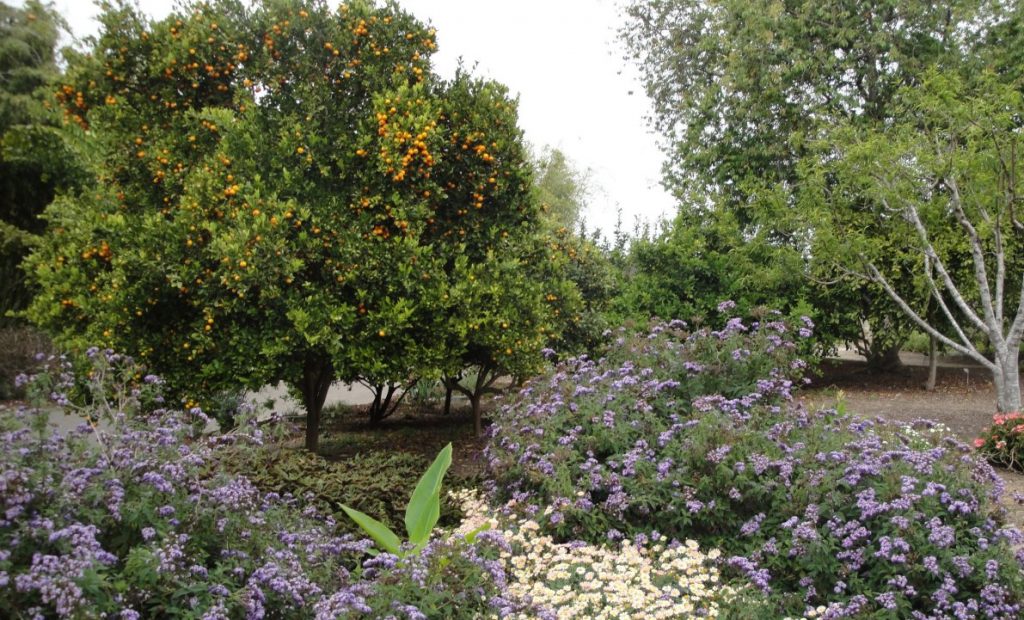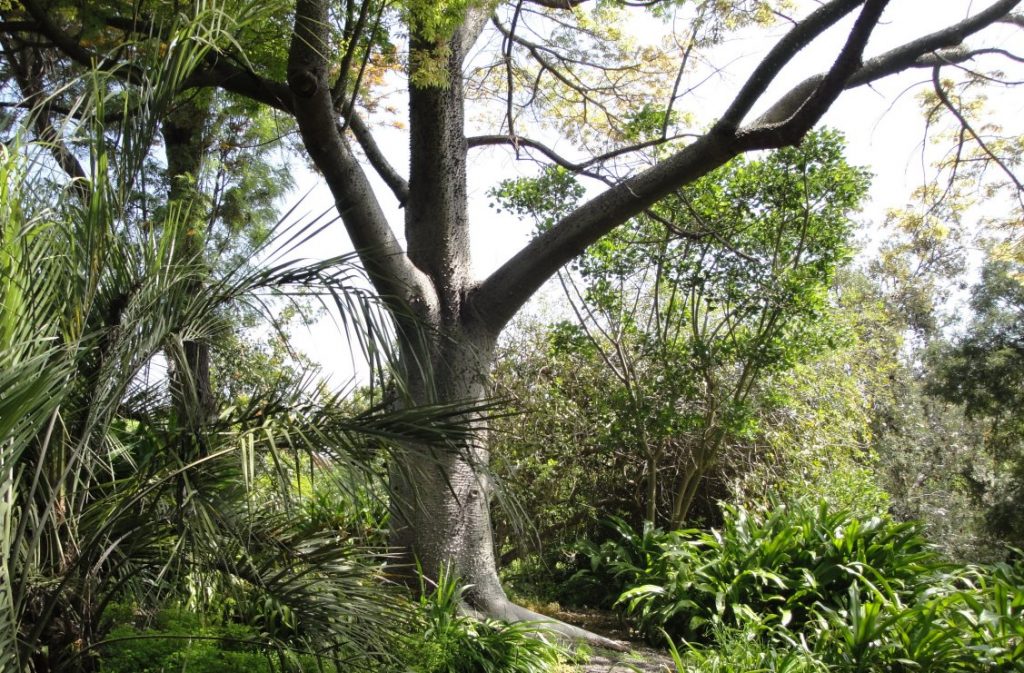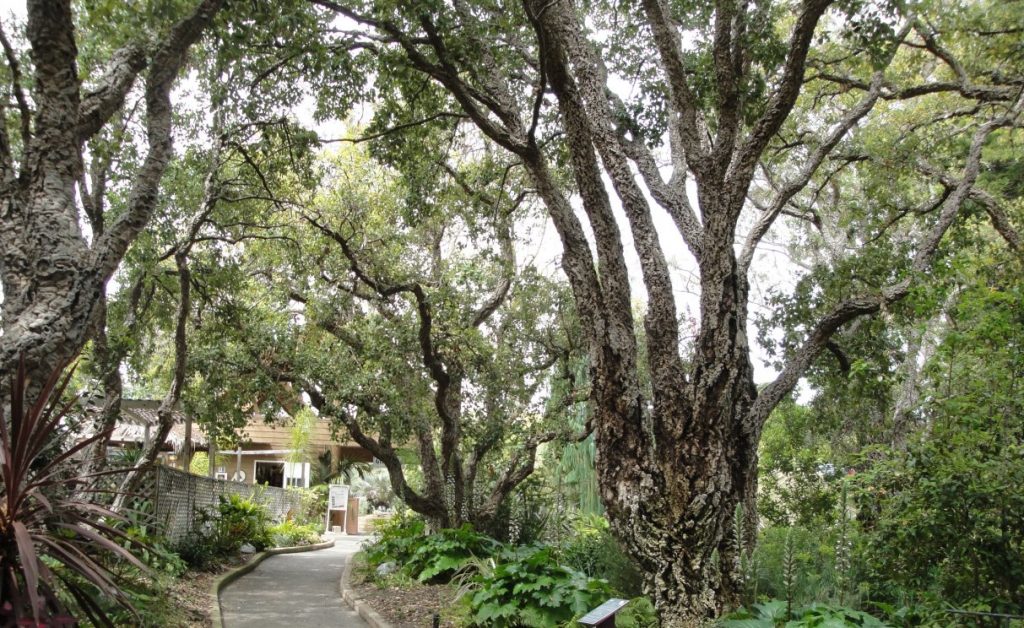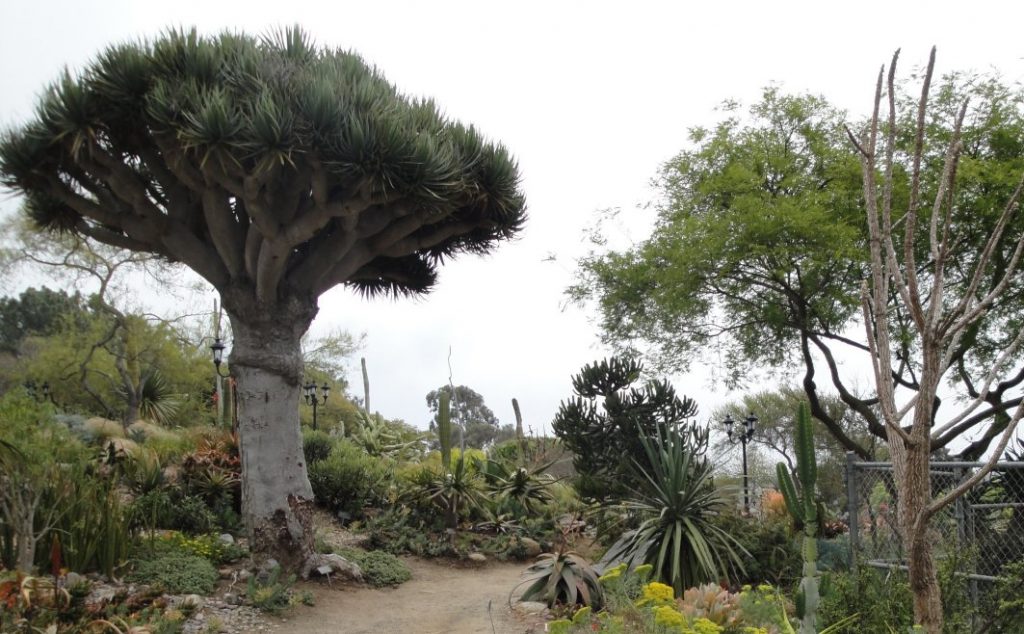
Relationships long established should not be changed for light or transient causes. Everything exists in a complex web of interrelationships and changing any part may bring unexpected systemic changes and unwelcome changes. But everything is always in the process of becoming something else. Change is constant and avoiding it is not an option. The best we can do is work toward sustainable, predictable change.

I thought about change and continuity, as I walked through the Quail Botanical Gardens north of San Diego. The Southern California environment most people know, love and want to preserve is largely man-made, as I wrote in an earlier post. The local environment has a lot in common with some places in South Africa, the Mediterranean and Australia, so plants from those places tend to do well in Southern California. Below, however, is a familiar tree from Brazil. I never knew what it was called. It is a floss silk tree (weird name).

There is some emphasis on trying to reestablish native or nature ecosystems. IMO, sustainable is important; natural or native really are not. The problem with natural is that the concept is too slippery and unrealistic. As for native, it all depends. Native plants and animals might be well adapted to the local environment and fit in the overall environment, but sometimes non-native plants and animals can be as good, or better. I am glad that banana, oranges, apples, wheat, potatoes, horses, honeybees etc have spread beyond their narrow native regions … and improved in the process. Sustainable, usually means a decent diversity and some non-native plants can become invasive, obliterating too much of the competition. It is also possible that invasive species might have undesirable characteristics. But it requires judgment of the whole system. There is no blanket native = good/non-native bad formula. Some native species may have become un-viable because of other changes in the environment. We cannot reestablish “pristine” environment and we have to resist the feeling that “what was, is good.”
With all the changes of the last century, and all that will come in this one, what used to be “natural” will no longer be sustainable. That is why sustainable is better than natural.

Above is a grove of cork-oak. The bark can be harvested every ten years or so after they mature. they live around 150 years. Cork grows naturally in Spain, Portugal and parts of N. Africa. Below is an old world desert plant landscape.

